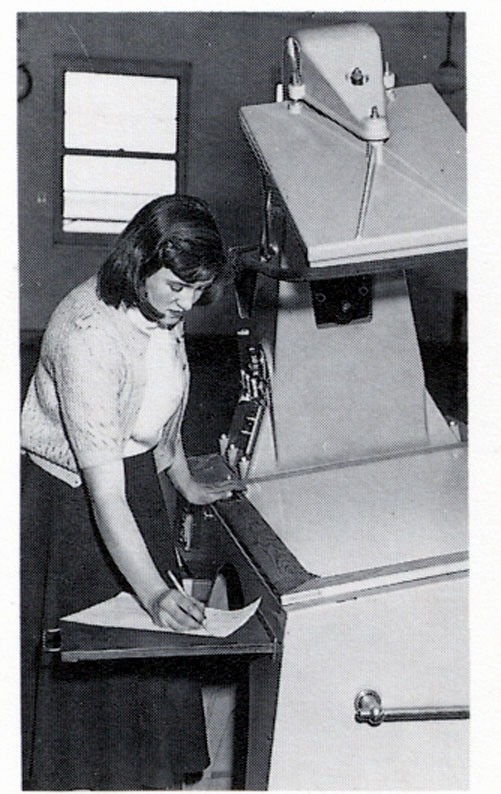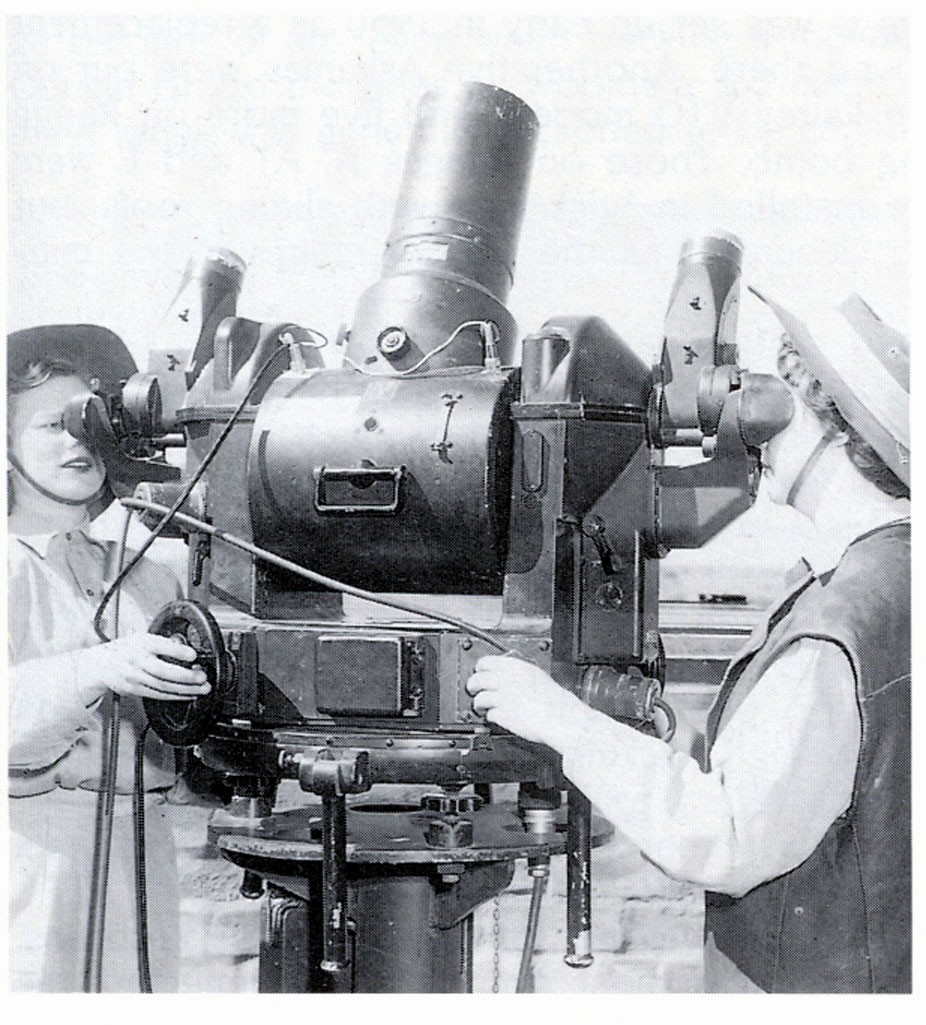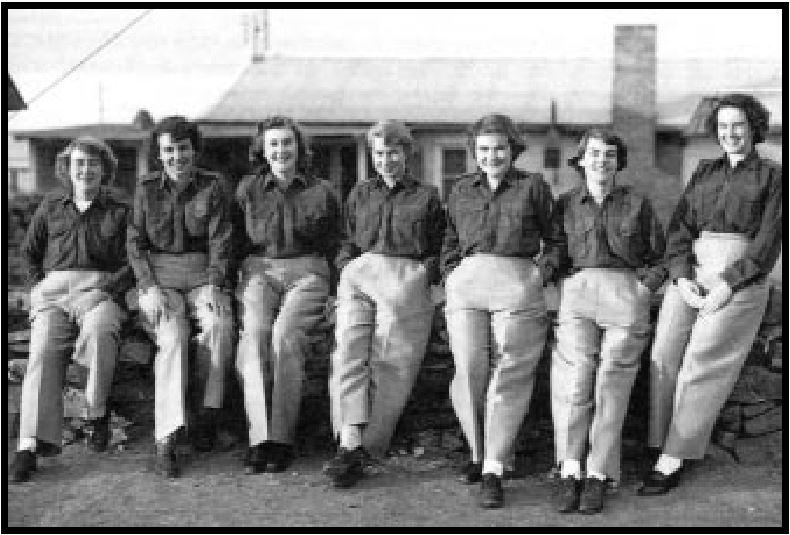
by Ida Moya
There’s been some great (and terrible) science fiction writing in the journey last month. I so appreciate these reviews, which help me find interesting things to read, and bring me up to date on the preoccupations of science fiction authors. The illustrations from the magazines that The Traveler includes are so compelling in style and subject matter. I think that they are an under-appreciated art form that, perhaps, sometime in the future, could become appreciated and highly collectible.
A few months ago I wrote about my friend Mary Whitehead, who works as an Experimental Officer in Australia. She recently wrote me back with some corrections, that I will pass on to you, in order not to mar the historical record.
For example, I said that Mary lived at Woomera, which was not the case. I was conflating the rocket testing range with the place where most of the computing work got done. She actually lives near the Weapons Research Establishment (WRE), which is located in Salisbury, a small town about 15 miles north of the big city of Adelaide. Woomera Rocket Range is in the isolated outback another 300 miles north of that.
In 1949, Mary, who studied mathematics in college, got a job in the Bomb Ballistics Section of the WRE. At that time, Mary was the only professional woman at Salisbury. Her first work was to lead a team of female Computers. At first, they used mechanical calculators like the noisy Friden’s and then Marchant’s like we used at Los Alamos Scientific Laboratory.

Bomb Ballistics Group Computer Judith Ellis recording data with pencil and paper from film, in 1949. (Courtesy of Defense Science and Technology Group)
In 1956 British company Elliott Brothers developed a custom-designed digital computer called WREDAC (Weapons Research Establishment Digital Automatic Computer) for WRE; one of but four digital computers in Australia at that time. This was a very sophisticated vacuum tube machine, a one off made a few years later than the ENIAC-style MANIAC we used at Los Alamos. In 1960 the WRE acquired the modular, somewhat mass-produced IBM 7090 mainframe computer, which is so valuable that they run it constantly, in three shifts.
Mary and some of her crew do go every once in a while to stay for a week at Woomera Village, next to the test range. She insisted that the Computers be able to observe the actual launches of rockets and missiles, and be trained in the operation of the data collection equipment — kinetheodolites, high-speed cine-cameras, radars, radio missile tracking systems, Doppler and telemetry reception equipment — in order to better interpret the results when they get back to Salisbury.

Two Computers wearing their army gear operate a kinetheodolite at Woomera around 1949.
Early on, it was quite a battle with the Range Superintendent to get her team to Woomera. He was concerned that it was an unsuitable and morally dangerous place for unattached young women. The compromise was that the women wear army gear – hat, khaki shirt and slacks, heavy brogues and leather jerkins for cold weather.

A team of computers visiting Woomera in 1950, wearing the army dress required by the Range Superintendent. Experimental Officer Mary Whitehead, Chaperone for the group, is second from the left. (Courtesy of Defense Science and Technology Group)
Back then, Woomera also did not have facilities for women, so they returned early from the range to have their showers from 4 to 5, before the men returned. The female Calculators also ate in the Officer’s Mess, so that they did not have to consort with the rougher men in the Other Ranks Mess. Today, though, the women working at Woomera have their own hostel and mess and no longer have to wear that army gear.
One part of Woomera range is a row of carefully calibrated cameras that take a series of photographs of a test launch. Her team also calibrates the cameras, which involves taking photographs of the starfield and getting the framing exactly right; a project that can take several weeks. Once calibrated, the tests commence and the launch photographs go back to the analysts, who use an overhead projector and other specialized equipment to translate each piece of film into location and time data. It’s really an amazingly detailed process involving a lot of cooperation. Now, what once took her team 4 weeks to calculate using Marchants, can be done in just a day on the IBM.

Long range Baker-Nunn camera for tracking satellites and photographing rockets, Woomera
Another mistake in my article that Mary pointed out to me was that she had never visited Los Alamos Scientific Laboratory. When she visited America, she went to the Smithsonian Astrophysical Observatory to get a better star catalogue. She also went to Patrick Air Force Base in Florida, and then the Aberdeen Proving Ground in Washington State, where she consulted with some men who had devised the mathematics for using stars as background markers for measuring the trajectories. Mary also went to White Sands Missile Range in New Mexico, which must be where we met. She didn’t get to observe any missile tests at White Sands, but spoke with a man there who studies the refraction of light.
The project Mary is working on now is called Black Knight. It is a research ballistic missile, a test vehicle being used to get data to better design and build missiles, develop launch techniques, and learn how to handle such a big item. Mary’s group examines the Black Knight’s trajectory and re-entry into the atmosphere. So it’s important to get those measurements right, so these ballistic missiles can be better designed.

Blue Streak, one of many missiles tested at the Range, on its launcher at Lake Hart, Woomera, 1963
Mary, like me, is working for her government. In Australia and Britain, like the United States, there are careful bureaucracies that establish titles and pay rates. As a female Experimental Officer, Mary is paid the standard women’s rate of two-thirds of the male wage. Most of Mary’s female Computers are right out of school, and are expected to stay for only a few years, until they are married, when it is mandatory that they retire. Miss Mary Whitehead is not married, perhaps because of this system. Mary has even joined the Professional Officer’s Association to try to lobby for equal pay for equal work, but she is frustrated because the rest of the members are men so they don’t think too much of her appeals. Right now she trains new recruits, who start at the men’s base pay, which is more than she makes as an experienced officer. This Programmed Inequality that includes discarding of skilled Calculators and discouraging of skilled female technical workers is a great loss to the accuracy of this trajectory work in particular, and the development of computing technology in Australia and the United Kingdom in general.
I won’t tell you yet how much I make, but I too am stuck in a similarly unfair and enraging bureaucratic system. But, like me, Mary finds the work and constant learning so stimulating that it is almost worth it. Fortunately, the national push for equal rights among the races and sexes is beginning to change this awful standard. The 1960s is opening with turbulence; some people agitating for change, while other forces oppose this change, as the Traveler keeps pointing out. It’s a confusing time and hard to know what is real anymore. Perhaps a little science fiction and fantasy will ease this pain, and give us some insight into the potentials that we can build into our tomorrows.


I'd like to thank scholar Kerrie Dougherty for her assistance with this article.
Thanks to both of you.
I'm sure there are parallels and connections between the systemic discouragement of women in science and the factors causing the dearth of women fans in science fiction…
Not only is the unequal pay system and other policies unfair, they are also foolish. The government loses the skills of valuable workers by discouraging them.
This is a wonderful blog which I shall be referencing in a paper I am doing on women in the early space race. Does anyone know what the colours of the army uniform worn on the ranges were? In the UK army women working on ranges wore a version of an old Royal Artillery uniform: white skirt or trousers with a navy blue double-breasted jacket like a navy jacket.
thanks